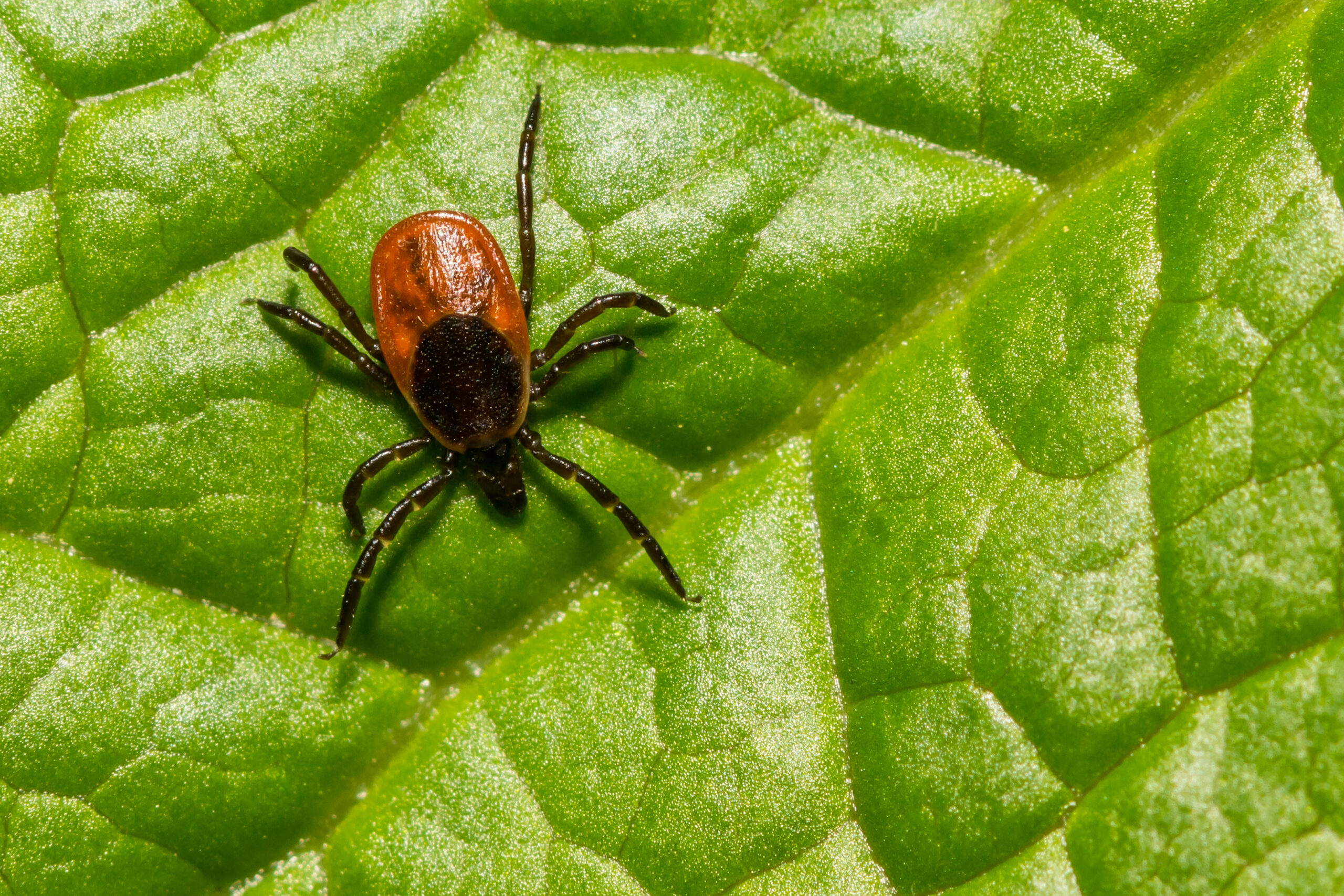
On any given morning, there is a possibility that Scott Campbell could wake up tired, fighting a headache and fever, muscle and joint pain — and then spot a bull’s-eye rash on his body.
And even he, as the director of the Arthropod-Borne Disease Program of the Suffolk County Department of Health Services, would not know exactly what bit him.
While the average East End resident might conclude that it’s Lyme disease — transmitted by blacklegged, or deer, ticks — there is a good chance they’re mistaking it for southern tick-associated rash illness, or STARI, which is carried by the lone star tick.
“The only way to really understand the difference is by looking at geographic location,” Campbell said. “If an individual gets a rash in an area where there’s no lone star ticks, it’s pretty conclusive that it’s Lyme disease. But in areas where there’s both active and sufficient numbers of blacklegged and lone star ticks, like Suffolk County, that’s kind of the gray area — where it’s extremely difficult to know the difference between the two.
“It’s a 50-50 chance,” he added.
With nearly identical symptoms and no diagnostic test for STARI, the key to pinpointing which disease is the culprit boils down to what kind of tick is behind it.
Lyme disease, which is caused by the bacteria Borrelia burgdorferi, is only transmitted by the bite of a blacklegged tick. According to Suffolk County’s Tick Pathogen Surveillance Program, 58 percent of adult blacklegged ticks and 24 percent of nymphs tested positive for Lyme disease in 2021 at a Southampton collection site. That was up from 26 and 28 percent in 2020, respectively, and 12 and 14 percent in 2019.
Brian Kelly, owner of East End Tick & Mosquito Control in Southampton, said he has also noticed a sharp rise in lone star tick populations over the last five to seven years. “They have just come out in droves,” he said. “I’m finding lone star ticks 10-to-1 over deer ticks. Most of the phone calls that I get in my office are for lone star ticks.”
While blacklegged ticks are very temperature sensitive and prefer cool, damp areas — “The hot sun to a deer tick is like a death sentence,” Kelly said — lone star ticks are much more aggressive. They can be found in the middle of the lawn, or crawling across a hot patio, even sitting on a pool chair — “places where you would never, ever find a deer tick,” he said.
“Lone star ticks will actually come and find you,” Kelly said. “If you’re sitting on your lounge chair by the pool and the lone star tick smells the carbon dioxide that your body lets off by breathing, and if they’re hungry, they come crawling right across the lawn, right out of the woods, to find you. The deer tick usually just waits on a piece of grass and will sit there and wait and wait and wait for something to walk by to latch onto.”
Years ago, as a tick bite prevention measure, Kelly would only spray the perimeter of a client’s property. Today, he often treats the entire lawn, he said, and suggests keeping grass manicured and getting rid of leaf litter. For both his customers and those with native, chemical-free gardens, he recommends wearing personal protection in tick-prone areas, and practicing frequent tick checks — at night, as well as the following morning, Campbell emphasized.
“Spraying your property helps; it doesn’t solve your problem, either,” Kelly said. “You spray your property all summer long, you go to the farmers market — you get a tick. You go to the beach — you get a tick. Gosh, they’re just everywhere. You go for any kind of hike in any kind of woods out here, if you’re not using a tick repellent, you’re crazy.”
Compared to Lyme disease, much less is known about STARI, including what pathogen causes the rash, Campbell explained. “It’s a developing question,” he said.
Because the STARI rash is very similar to Lyme disease, medical providers will also often treat it with doxycycline — especially if they don’t know which tick caused it — and it appears to help with symptoms, Campbell said.
“I haven’t seen anything published as of late on STARI, but I know there are people researching it, and I don’t know if they’re getting any closer to determining what the causative agent is,” he said. “But the more ticks we had removed from individuals that result in a rash, that would help.”
The medical community is split on whether to test ticks that are removed from patients, Campbell said. The Centers for Disease Control and Prevention warns against it, he said, explaining that even if a tick tests positive, it may not have transmitted a disease, and if it tests negative and the patient shows symptoms, it may have been the wrong tick collected.
On the other hand, the more data that’s collected — especially when trying to determine the cause of STARI — perhaps the better. “It’s kind of like a double-edged sword,” Campbell said.
Either way, saving the tick after it’s removed — stored in a plastic bag in rubbing alcohol or hand sanitizer, labeled with the date and where it was found — can help down the line. If a rash develops, identifying the species of tick will, at the very least, indicate whether the cause is Lyme disease or STARI, Campbell noted.
“The longer a tick is attached, there is an increased risk of illness,” he said. “So you want to get the ticks off as soon as possible.”